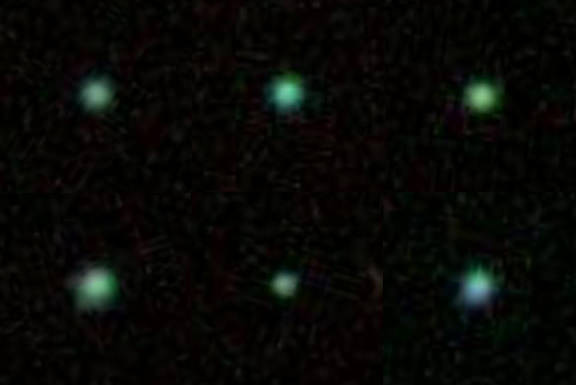Today, we see an unobstructed view of the cosmos in all directions. But, a time existed near the Big Bang when the space between galaxies was an opaque fog where nothing could be seen. And according to two University of Michigan researchers, rare Green Pea galaxies, discovered in 2007, could offer clues into a pivotal step, called reionization, in the Universe’s evolution when space became transparent.
Reionization occurred just a few million years after the Big Bang. During this time, the first stars were beginning to blaze forth and galaxies. Astronomers believe these massive stars blasted the early universe with high-energy ultraviolet light. The UV light interacted with the neutral hydrogen gas it met, scraping off electrons and leaving behind a plasma of negatively charged electrons and positively charged hydrogen ions.
“We think this is what happened but when we looked at galaxies nearby, the high-energy radiation doesn’t appear to make it out. There’s been a push to find some galaxies that show signs of radiation escaping,” Anne Jaskot, a doctoral student in astronomy, says in a press release.
In findings released in the current edition of the Astrophysical Journal, Jaskot and Sally Oey, an associate professor of astronomy, the astronomers focused on six of the most intensely star-forming Green Pea galaxies between one billion and five billion light-years from Earth. The galaxies are compact and closely resemble early galaxies. The objects are thought to be a type of Luminous Blue Compact Galaxy, a type of starburst galaxy where stars are forming at prodigious rates. They were discovered in 2007 by volunteers with the citizen science project Galaxy Zoo. Named “peas” because of their fuzzy green appearance, the galaxies are very small. Scientists estimate that they are no larger than about 16,000 light-years across making them about the size of the Large Magellanic Cloud, a irregular galaxy near our Milky Way Galaxy.
Using data from the Sloan Digital Sky Survey, Jaskot and Oey studied the emission lines from the galaxies to determine how much light was absorbed. Emission lines tell astronomers not only what elements are present in the stars but also much about the intervening space. By studying this interaction, the researchers determined that the galaxies produced more radiation than observed, meaning some must have escaped.
“An analogy might be if you have a tablecloth and you spill something on it. If you see the cloth has been stained all the way to the edges, there’s a good chance it also spilled onto the floor,” Jaskot said. “We’re looking at the gas like the tablecloth and seeing how much light it has absorbed. It has absorbed a lot of light. We’re seeing that the galaxy is saturated with it and there’s probably some extra that spilled off the edges.”

